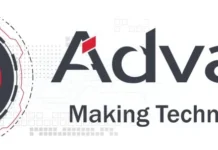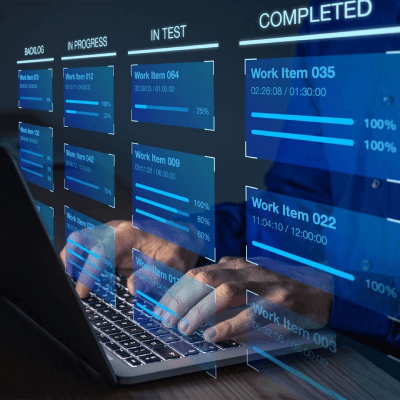Raj Mruthyunjayappa, President – India, Anthology Inc NEP
The National Education Policy (NEP), aimed at the holistic development of Indian education system, will need constant and vital interventions from the EdTech industry to achieve its objective of ensuring high-quality and accessible education across the country. For the policy to achieve desired results, development of digital infrastructure will be essential, especially keeping in mind the need to have a multi-disciplinary approach. Few key objectives as defined include recognizing, identifying, and strengthening the unique capabilities of each student and promoting their holistic development in both academic and non-academic spheres. Flexibility for learners to choose their learning trajectories and programs, and thereby choose their paths as per their talents and interests, life skills such as communication, teamwork, cooperation, and resilience are few other significant objectives. While these tend to be seen as process and pedagogy change, larger point of leveraging technology to enable this transformation should not be missed out.

Important Announcement – EasyShiksha has now started Online Internship Program “Ab India Sikhega Ghar Se”

There is tremendous scope of EdTech solutions to help schools, colleges and universities fast-track digital learning and technology adoption across various functions such as teaching, learning, assessments and overall operations. The NEP has been initiated at a critical juncture with classes being conducted virtually or phygitally, a combination of physical and digital, due to the pandemic, where teaching methodologies and techniques need to be re-imagined. One of the central principles steering the education system will be the extensive use of technology in teaching and learning, removing language barriers, educational planning and management,
Higher education institutions have been encouraged to set up start-up incubation centres along with technology development cells to cultivate a culture of research. Significantly, the policy talks about the creation of the National Education Technology Forum (NETF), to enable exchange of ideas to enhance learning methods. Increased usage of Artificial Intelligence (AI) tools is also recommended. The policy further looks to create awareness on various facets of disruptive technologies that address crucial issues like data protection.
One major challenge that the higher education institutions face today is lack of developmental and scalable infrastructure. At present, India’s higher education enrolment, calculated in terms of Gross Enrolment Ratio (GER), stands at a dismal 26%. The government is looking to revamp existing structures to meet the demand of modern higher education facilities with the help of public-private partnerships. The investments should be directed towards creating an adequate technology infrastructure for higher education institutions which will result in educational parity to students across geographies.
Top Courses in Software Engineering
NEP has stated that the plan is to bring every aspect of higher education, whether it is academic, technical, or vocational, and every type of education out of silos. Attempts are also being made to keep the administrative layers to a minimum and ensure more coordination among them. However, over-centralization is leading to certain challenges. In recent decades, a form of policy discourse has developed in which the dominant opinion holds that the state cannot be expected to pay for the education of all. Correspondingly, there has been a lack of development of educational infrastructure to meet the rapidly increasing demand for higher education. In response to the widening gap between the demand and supply for education, successive governments have pushed through measures that have largely allowed for greater penetration of private capital in higher education, and its corollary, the persistent decline in per-capita allocation of governments funds towards education. Consequently, private colleges and universities have grown in number and there has been a rapid expansion of the open and distance learning (ODL) education options. This challenge is encouraging an increase in the number of online education and pushing the universities to go online. Such universities will have to adopt and rely on EdTech solutions by digitising student enrolment, student services, career counselling, alumni etc.
Empower your team. Lead the industry
Get a subscription to a library of online courses and digital learning tools for your organization with EasyShiksha
Request NowQ. Are EasyShiksha's internships truly free?
Yes, all internships offered by EasyShiksha are completely free of charge.
Q. How can I apply for an internship with EasyShiksha?
You can apply by visiting our website, browsing available internships, and following the application instructions provided.
Q. What types of internships are available through EasyShiksha?
EasyShiksha offers a wide range of internships across technology, business, marketing, healthcare, and more. Opportunities are continuously updated.
Q. Will I receive a certificate upon completing an internship?
Yes, upon successful completion, you will receive a certificate recognizing your participation and achievements.
Q. Are EasyShiksha's internship certificates recognized by universities and employers?
Yes, the certificates are recognized by universities, colleges, and employers worldwide.
Q. Is the download of certificates free or paid?
Access to internships and courses is free, but there is a small fee to download certificates, covering administrative costs.
Q. When can I start the course?
You can choose any course and start immediately without delay.
Q. What are the course and session timings?
These are fully online courses. You can learn at any time and pace. We recommend following a routine, but it depends on your schedule.
Q. What will happen when my course is over?
After completion, you will have lifetime access to the course for future reference.
Q. Can I download the notes and study material?
Yes, you can access and download course materials and have lifetime access for future reference.
Q. What software/tools would be needed for the course?
All necessary software/tools will be shared during the training as needed.
Q. I’m unable to make a payment. What should I do?
Try using a different card or account. If the problem persists, email us at info@easyshiksha.com.
Q. Do I get the certificate in hard copy?
No, only a soft copy is provided, which can be downloaded and printed if required.
Q. The payment got deducted but shows “failed”. What to do?
Technical errors may cause this. The deducted amount will be returned to your account in 7-10 working days.
Q. Payment was successful but dashboard shows ‘Buy Now’?
Sometimes payment reflection is delayed. If it takes longer than 30 minutes, email info@easyshiksha.com with the payment screenshot.
Q. What is the refund policy?
If you face technical issues, you can request a refund. No refunds are issued once the certificate has been generated.
Q. Can I enroll in a single course?
Yes, select the course of interest, fill in the details, make payment, and start learning. You will also earn a certificate.
Q. My questions are not listed above. I need further help.
Contact us at info@easyshiksha.com for further assistance.
Circumstances have driven us to believe virtual classrooms are acceptable for of schooling for those with access to technology. Hence it is important the HEIs gear up towards digital and technology solutions to continue uninterrupted classes and meet the demands of the student community. Further, NEP encourages industry-academia collaboration to mitigate the skill gap and to ensure employability by enabling the students to be industry-ready, highlighting the importance and relevance of introducing EdTech solutions in the Indian education space. When universities and industries work together, it often leads to high quality research and innovative solutions and also reduces costs. To facilitate all this, a common EdTech platform may need to be created to foster new relationships and forge new ties and alliances.
For information related to technology, visit HawksCode and EasyShiksha
ALSO READ: IIITB conferred A+ grading by NAAC
Get Course: Intro-to-Blockchain-Provided-By-FinTech-School







































































